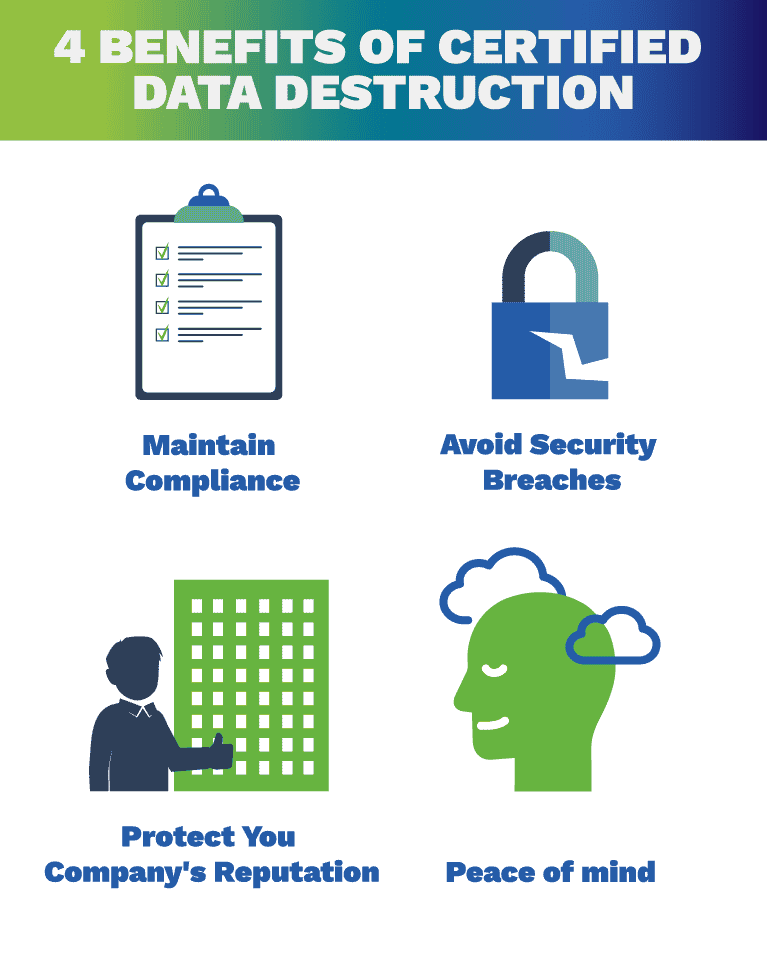The Importance of Effective Data Destruction Practices in Safeguarding Sensitive Info and Ensuring Computer Security
In a period where data breaches are increasingly usual, the relevance of effective data destruction methods can not be overstated. Carrying out durable information devastation methods not just alleviates these dangers however additionally aligns with lawful compliance requirements, making certain that organizations support their credibility and foster customer trust.
Comprehending Information Damage
Comprehending information devastation is essential in today's digital landscape, where delicate information can conveniently be jeopardized. Effective data devastation entails not simply erasing data however making sure that information is irretrievable with comprehensive techniques. This procedure is vital for organizations that deal with private client information, intellectual property, or interior papers, as any breach can cause serious financial and reputational effects.
Information damage includes various techniques, consisting of shredding physical media, degaussing magnetic storage space devices, and using software-based services that overwrite data numerous times. Each technique serves a specific function and should straighten with the level of sensitivity of the info being taken care of. For example, physical damage is often preferred for hard drives including highly private data, while software application methods could be adequate for much less sensitive details.
Moreover, sticking to sector standards and laws, such as the General Data Security Guideline (GDPR) or the Wellness Insurance Coverage Portability and Accountability Act (HIPAA), is imperative for compliance and to alleviate legal threats. Organizations needs to develop a durable data devastation policy, train staff members on best practices, and regularly audit their procedures to guarantee that all sensitive information is dealt with safely and efficiently.
Dangers of Inadequate Practices
Inadequate data damage practices expose companies to considerable dangers that can have far-reaching effects. When delicate details is not appropriately disposed of, it remains vulnerable to unauthorized accessibility, which can cause data breaches and identification theft. Such events not only endanger the protection of individuals however additionally taint the organization's credibility, causing a loss of consumer depend on and prospective monetary effects.
Furthermore, governing conformity is increasingly stringent in many industries. Failing to stick to information damage laws can result in large penalties and lawful actions versus organizations. These fines can strain funds and divert interest from core service operations.
In enhancement, the misuse of recurring data can lead to intellectual home burglary or company espionage, threatening affordable advantages (data destruction). The effect of inadequate information damage extends past immediate monetary losses; it can also lead to long-lasting damages to brand name honesty and market placement

Organizations should acknowledge that data safety is not entirely about avoiding breaches; it additionally incorporates the accountable administration of data throughout its lifecycle. Overlooking effective data damage protocols can have tragic ramifications, underscoring the necessity for durable procedures to reduce these dangers.
Finest Practices for Information Damage
Implementing efficient data damage techniques is essential for securing delicate information and maintaining conformity with regulative standards. Organizations must take on a multi-faceted approach to make sure that information is irretrievable, thereby preventing unauthorized accessibility and potential violations.
First, data must be categorized based on level of sensitivity, permitting companies to apply suitable destruction methods tailored to the level of danger. For electronic data, making use of software-based data-wiping tools that abide by industry criteria can efficiently overwrite existing data. Physical great site destruction techniques, such as shredding or degaussing, are essential for devices that keep sensitive info, making sure full removal.
Developing a clear data retention policy is essential, describing how much time various kinds of information must be kept prior to destruction. Normal audits of information storage systems are likewise needed to determine outdated or unneeded data needing elimination.
Moreover, training workers on the significance of data destruction and the particular procedures to adhere to fosters a society of safety within the organization. Ultimately, maintaining documents of information devastation refines supplies liability and sustains conformity with external policies and internal plans. By sticking to these ideal practices, organizations can considerably reduce the dangers connected with data direct exposure.
Legal and Conformity Factors To Consider

Failing to abide by these policies can result in severe charges, consisting of substantial fines and reputational damage. Organizations should carry out a durable data destruction plan that straightens with these lawful structures and offers clear guidelines on the proper techniques of data disposal, whether physical shredding or electronic wiping.
Moreover, keeping documentation of data devastation tasks is crucial for showing compliance during audits or evaluations. By click this link focusing on lawful and conformity factors to consider, organizations can enhance their information protection pose and foster trust fund with customers and stakeholders, eventually contributing to an extra protected data management atmosphere.
Advantages of Effective Data Damage
Efficient data destruction techniques expand beyond mere conformity; they provide considerable benefits to companies that prioritize them. By ensuring that delicate details is irretrievably damaged, organizations mitigate the threat of information violations and the potential economic effects connected with them. This proactive strategy not just safeguards against unapproved accessibility yet likewise enhances the general credibility of the company in the eyes of clients and stakeholders.
Applying robust data damage methods, such as physical damage of storage space tools or advanced information cleaning strategies, contributes to the conditioning of a company's cybersecurity pose. data destruction. It minimizes the probability of copyright burglary and safeguards exclusive info, consequently maintaining an one-upmanship in the market
Final Thought
In conclusion, reliable information damage techniques are important for securing delicate info and boosting total computer safety and security. Inevitably, a dedication to durable data devastation methods promotes a culture of responsibility, thereby strengthening an organization's cybersecurity posture and keeping client trust.
